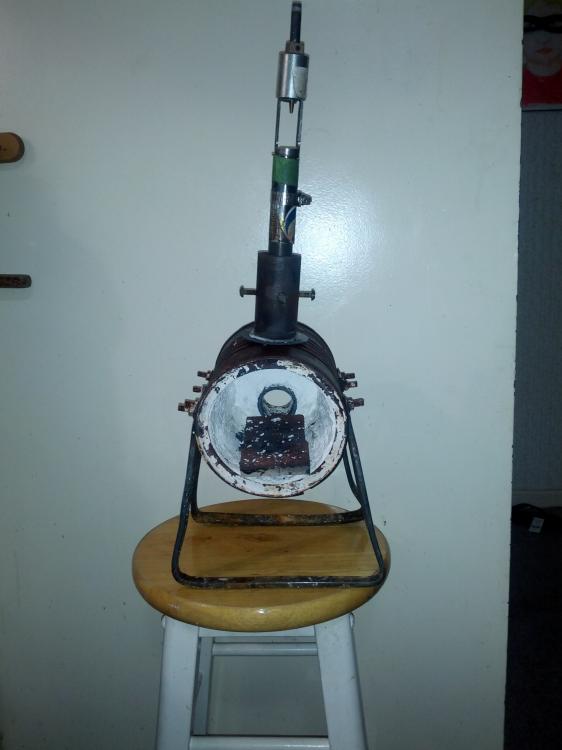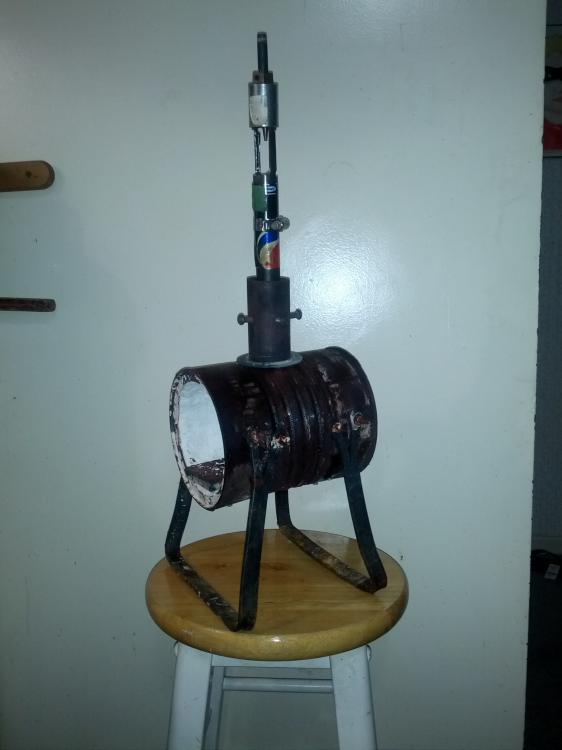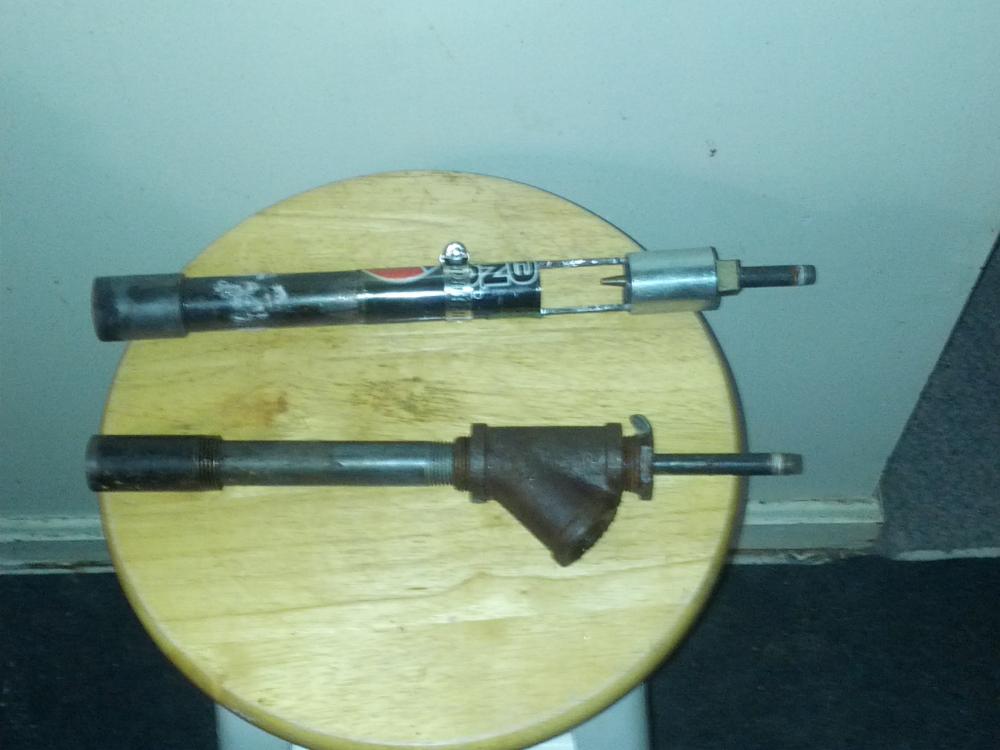-
Posts
309 -
Joined
-
Last visited
Content Type
Profiles
Forums
Articles
Gallery
Downloads
Events
Posts posted by jcornell
-
-
Approximately 4:1 Zircopax to Kaolin - four measures of zircopax to one measure of Kaolin. It seems to work.
-
6 hours ago, Mikey98118 said:
These two burners are part of the Gas Burners for Forges, Furnaces, & Kilns book update, so you guys don't have to buy the updated version to stay current, let alone wait for it to hit the book shelves. These are notes; not the finished chapters, so photos and drawings are yet to be posted, but you can corner the author and demand clarifications.
Well, rest assured, once it's in print, I'll have a copy on my reference shelf.
-
Attached are the chapter notes for the 1/4" tube burner and 3/8" tube burner for comparison.
Mike says that there are no pictures - yet. Posted with Mike's permission.
-
Here's an upload of Mike Porter's design notes
-
JWS pointed out in the first post that the steel block is A2 - which means it hardens as it cools in the air - so a little less daunting to quench than if it were another alloy.
(I asked him that question and he pointed out the original post, which I overlooked.)
-
I haven't put in anything hot yet - but I have noticed that when I check things the next day that the vinegar is slowly bubbling, so I suspect that there's a lot of chemistry going on when there's scaled up steel in there. Sticking my hand in the vat is interesting, especially if I have any cuts or scrapes on my hand. I've got to come up with some sort of basket with a handle.
-
Well, you were an inspiration - I bought two boxes (2 gal each) of white vinegar at Sams Club. A small kitty litter bucket holds about three gallons (max) I have two gallons in it right now. I've been using it to eat off scale. It turns from clear to red/brown fairly quickly. Is there a point when it has to be changed, or do you just keep adding vinegar?
-
Railroad people; any idea what kind of metal the fat J-shaped pieces in the lower right are?
Rail Clip - very stout spring steel.
-
Looks clever - doesn't it spray off of one end?
What were you using for a sander prior to this?
Reference for the mister? I can't find it for that price on Amazon.
-
Search around for ceramic (Pottery) supply. What you want is kaolin clay (what porcelain is made from) and zircopax (made from zirconium). Mix this together and coat the inside of your forge - somewhat tough and very reflective. Ratio is 1:4 (clay to zircopax). I've used colloidal silica (rigidizer) as the wetting ingredient with success.
Here's a start on your supply quest:
-
If you bought Kaowool, you'll definitely want to cover it with something to insure that you're not breathing ceramic fiber shreds as you stand in front of the propane forge. If you bought Superwool (water soluble) it's not as critical.
I've always covered the fiber with something. I use a home brew mix of zircopax and kaolin which is a nice reflective coating that provides a bit of protection.
-
The five gallons of vinegar gives me something to aspire to - I pour the vinegar into a one gallon ziplock bag and then suck the remaining air out of the bag, putting the bag with vinegar and steel onto a shelf for the vinegar to do its anti-scale magic.
The WD-40 is used under the notion that it will burn off and leave a layer of soot on the steel, protecting it from scale producing oxidation.
For charcoal I went to the pet store and purchased a big cardboard carton (half gallon size). Borax and charcoal both went (separately) into an old coffee grinder that's now dedicated to grinding non-food items. The black coffee grinder is for flux stuff, the white coffee grinder is for spices and coffee beans.
-
Well, the weld was very well prepared. I'd annealed the file to cut it in half, and I split the spike lengthwise. Spike and file were both pickled in vinegar to clean any and all scale, along with a good wire brushing. File and spike were fit together and then the joint was coated with WD-40. WD-40 soaked weld joint was placed into a hot forge, and then when up to temperature, I sprinkled the Alaska Flux in place. So, it was very clean and the joint couldn't oxidize while getting up to temp.
That being said, it was somewhat surprising how quick I felt the surfaces bond when I started tapping it with a light hammer.
It's a good file, so it should make a decent blade. My blade grinding skills (along with my heat treating skills) are not the best, but I'm getting better.
Thanks for sharing.
-
I mixed up some Alaska flux yesterday and tried it today. It seems to work well - I was welding a steel file into a railroad spike knife.
-
Do a search on Amazon for 0-30 propane regulator - in the USA I get two price points, $28 and $52. Or look up High Temp Tools on the internet - they sell a nice regulator, but it's a bit more expensive.
-
I tried it on forge #1 - it wasn't particularly reflective, and it flaked terribly.
-
Readily available on Amazon.
Specify either the part number or "tapered Tweco" in your search.
-
<snip>
, I still have my first and it's 10"dia. 5/16" wall and is major overkill . . . I recommend using 10" stainless steel stove pipe for the shell.
Frosty The Lucky.
Okay, Frosty, I"ll bite,
Where do you find a 10" diameter stainless stove pipe? I can't find one online anywhere. Is this an Alaska thing?
-
Here's home-made forge #4 - I built two out of insulating fire brick and two out of coffee cans. This one is lined with one inch of superwool (like kaowool but water soluble for safety). It's coated inside with a mix of rigidizer, zircopax and kaolin.
Also pictured are two home-built burners, one a wye burner (based on the z-burner) and the other a version of a nano-mongo burner.
Cheap to build, works well, reaches welding heat. My son managed to make a 19" super-bowie in this forge, which is kind of pushing the envelope, but it tells you that it's more than just a toy forge.
-
The main purpose of the rigidizer is to keep your kaowool from flexing too much. ITC-100 on kaowool will flake off rather quickly if the kaowool is not made stiff somehow. So, I use rigidizer, soaking it into the wool. Then I fire the forge, making it stiff, then I coat the inside with kaolin and zircopax (I buy from the same supplier as Frosty). It's not bullet-proof, but it's reasonably durable. From time to time you will need to paint another layer of wash as the old stuff chips, cracks, flakes and wears away.
J
-
I have used the 0-30 Bayou Classic regulator - it's not as sturdy as my main regulator, and it doesn't hold a gauge, but if you know how to tune a burner by ear and eye, it's sufficient for the task. If I used it all the time, I'd regularly check it for leaks (soapy water is my friend).
J
-
Uri has an active Facebook page (he posted something two days ago) so you might look at that also.
-
I have a 4" chisel, but I use a cut-off wheel on my angle grinder to incise the four faces of my square stock for pineapple twists.
As always, your mileage may vary.
-
Why have you concluded that you need a 2 foot forge? Why blown versus atmospheric?





Questions about forge insulation
in Insulation and Refractories
Posted
I don't know what type of refractory cement you have, but mine was terrible. It cracked and peeled like a bad sunburn. Look at Wayne Coe's website for a decent cookbook - I have a way smaller forge, so I don't go for such a level of refractory - I have zircopax/kaolin on top of superwool with rigidizer.